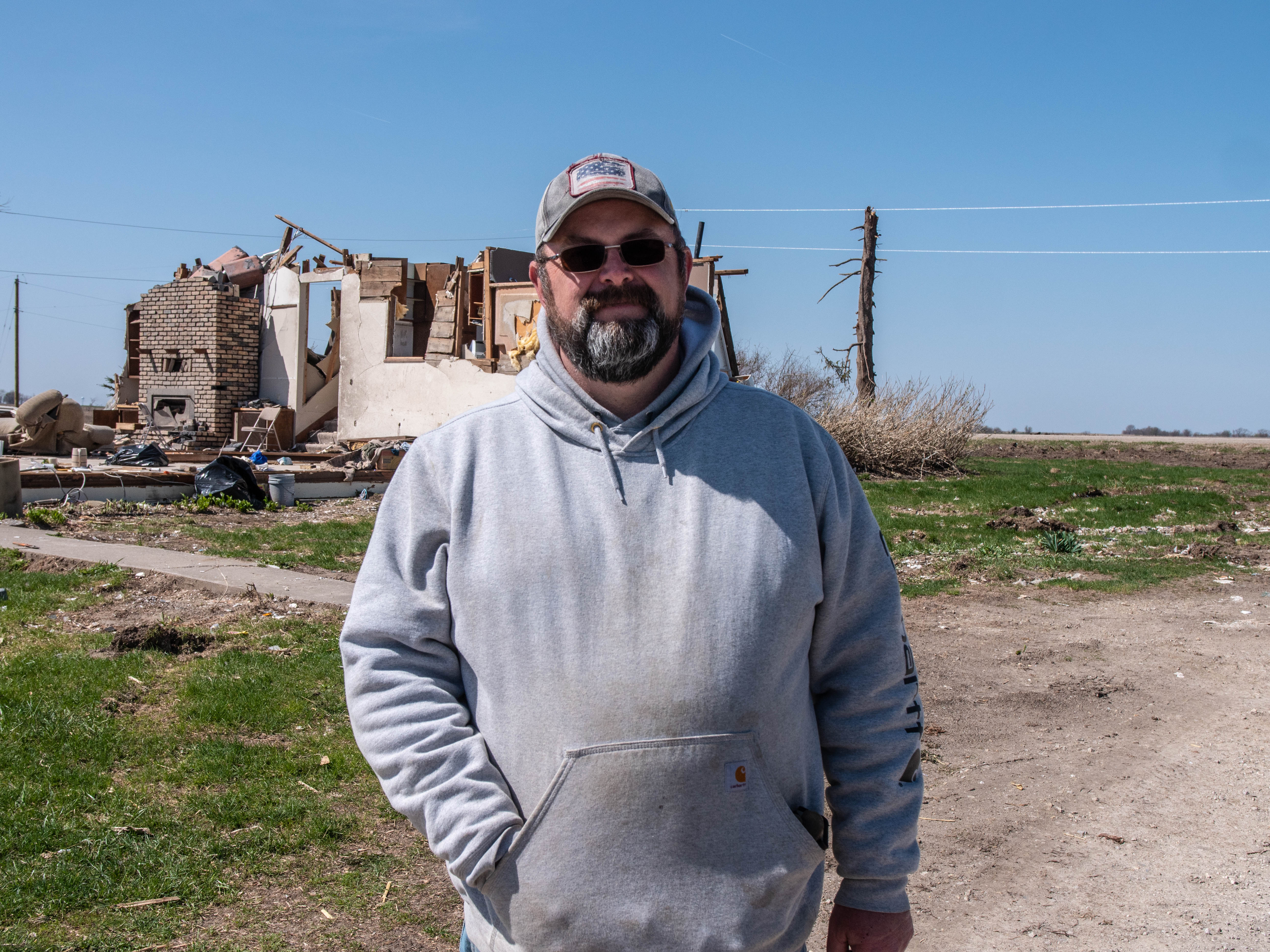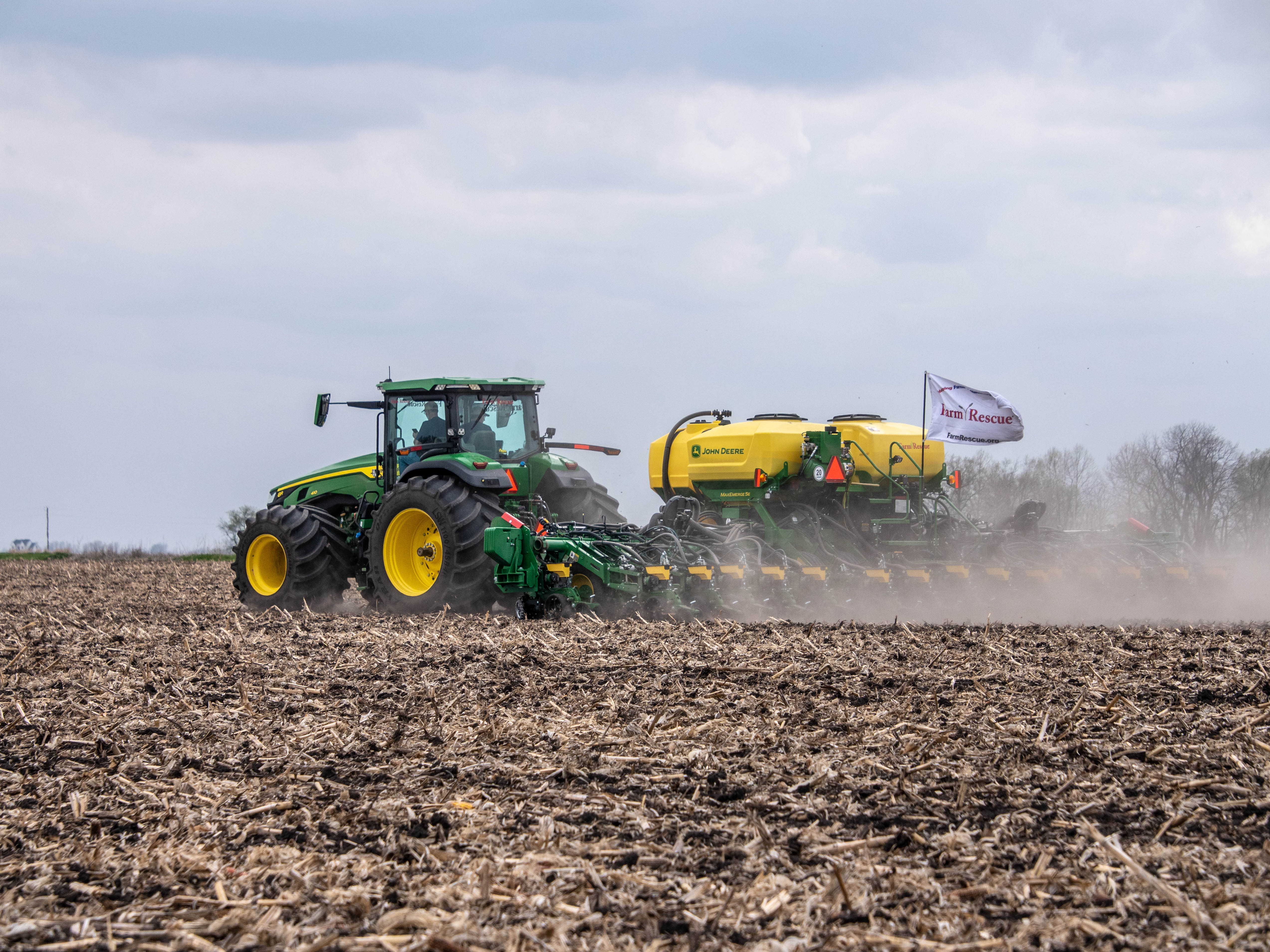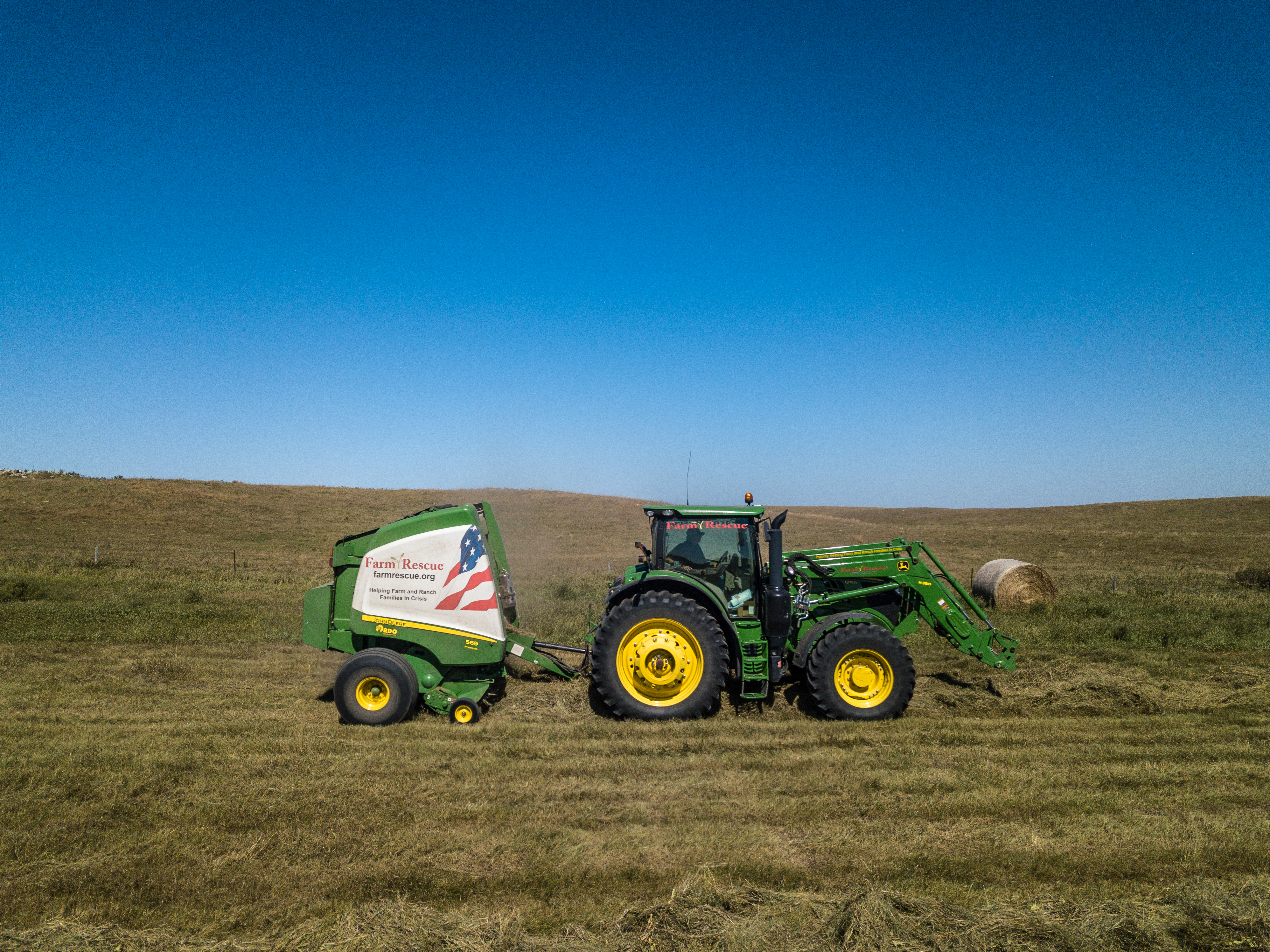Founded in 2005, Farm Rescue is a non-profit organization that offers volunteers, equipment and other resources to help farmers in need.
Be it natural disasters, injuries or illnesses, Farm Rescue assists farmers with planting or harvesting, baling hay, livestock feeding or commodity hauling, says Dan Erdmann, Farm Rescue’s marketing program manager.
What started as a small seed in the mind of the organization’s president and founder, Bill Gross, has grown into a service that has benefited nearly 1,000 farm and ranch families across eight states, including Iowa.
“We have volunteers from all over the country – 49 out of 50 states,” Erdmann says. “It truly takes a village to make this happen.”
Over the years, Farm Rescue has stepped in to help farmers battling tornadoes, wildfires, drought, and health issues, including major surgery and cancer.
In Whetstine’s case, it was the late March tornado that destroyed his family’s farm that Friday afternoon that created the need for help. Help Whetstine didn’t ask for but welcomed.

Clint Whetstine stands in front of the remains of his house following the March tornado.
“All they do is help people like me,” Whetstine says. “It’s just a great organization.”
Although Whetstine had heard about Farm Rescue and the work done over the past several years, he wasn’t the one to reach out initially.
“My sister called Farm Rescue directly,” he says.
A few days later, Farm Rescue called Whetstine.
“We discussed what I needed to farm and what machinery was still functioning,” he says.
Still reeling from all the damage and things he and his family had to do, he didn’t have much time to think about what Farm Rescue might be able to do for him.
Ultimately, they agreed assistance with planting soybeans would be a good start.
Farm Rescue volunteers arrived the following Saturday with a tractor and planter from northwest Iowa and got to work.
“The wheels started turning. They completed most of the tillage and then hooked on the planter they brought down and planted 355 acres of soybeans,” Whetstine says. “It went quick.”
Building Community
Erdmann says the work is important because farmers and ranchers are extremely proud people; it’s not always easy for them to ask for help.
“I think it is just nice to know someone in the community is looking out for you, whether it’s a spouse, family member, neighboring farmer or a business,” Erdmann says.
Farm Rescue provides boots-on-the-ground assistance to help a farmer through the season.
“It’s a hand-up and tangible support,” he says.
The Process
Farmers must fill out an application to get the process started. The application is reviewed by the organization’s board of directors to determine the individual needs.
“Usually the turnaround is pretty quick – a week or two. We’ve mobilized volunteers and equipment sometimes within 48 hours, depending on the situation,” he says. “We can assemble pretty quickly.”
There is usually a site visit beforehand to see what needs to be done. Volunteers assess what’s going on, speak directly to the farmer or family members, and start to formulate a plan.
“Because of the territory we cover, we have to be flexible, not only with what the farmer wants but with our volunteers and finding equipment,” Erdmann says.
Farm Rescue’s volunteer base is diverse, providing a wide array of expertise.

“We have retired farmers and even current farmers who take time away from their farms. Pilots, pastors, military veterans and law enforcement all give of their time to assist. We once had a rocket scientist who helped with planting,” he says.
While Whetstine’s sister was the one to make the call, Erdmann says not every referral pans out.
“For some farmers, they’re reluctant to ask for assistance, and we’re not going to force anyone to accept that help,” he says.
But for those like Whetstine who accept the support, the process is very individualized.
“Our priority is to do things the exact same way the farmer would want to do it, whether it’s planting or harvesting,” Erdmann says, pointing to processes like row spacing and seed depth.
“It’s not a blanket approach; everyone is different,” he says.
‘A Great Relief’
The funnel cloud that bore down on Whetstine’s farm destroyed nearly everything.
“There were eight of us in the basement,” he says. “We heard the wind come up, heard a crack which sounded like a full bag of cans, and our ears were popping. Then we realized the house was gone.”
When it was safe to leave the shelter, the family was left with piles of debris and destruction.
Fields were covered in debris, sheds were destroyed, farm equipment was tangled, and animals fell victim to the tornado’s wrath.
“It was pretty devastating,” Whetstine says. “We were kind of in shock.”
The Whetstine family was immediately surrounded by friends and neighbors, moving surviving cattle and hogs to livestock barns in nearby communities.
And then Farm Rescue volunteers were there to help Whetstine get his crops planted.
“It was a great relief,” he says.

Stepping In
Erdmann says he is proud to be a part of the efforts in helping farmers through tough situations. “We’re helping those who feed the world. We work to create a bridge between crisis and success and get the farmer on to the next season,” he says. “That’s what drives us every day.
The harder we work, the more families we can help.”
And the connections made during these times of hardship and crisis are long-lasting.
“We have volunteers who are still in contact with the farmers and ranchers they helped,” Erdmann says. “There are such strong bonds formed.”
Whetstine estimates it will take some time to return to “normal.”
“I think we’re going to be picking up for the next year and a half,” he says. “We lost about 20 acres of trees in the timber, and we’re trying to schedule time to rebuild.”
Whetstine says Farm Rescue’s assistance was a relief and a light during some dark days.
“They stepped in during a period when I was not able to do what I needed to get done,” he says. “I’m so grateful.”
For more information on Farm Rescue, their mission and how to volunteer or donate, go to: https://farmrescue.org